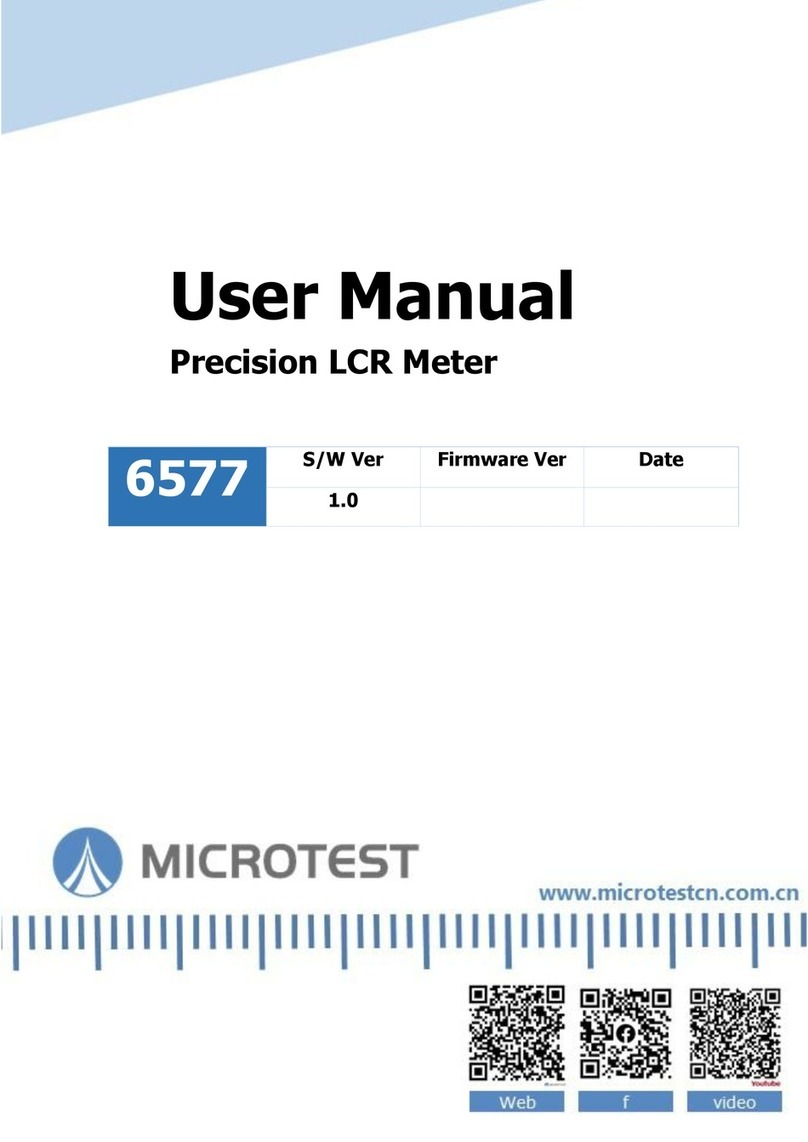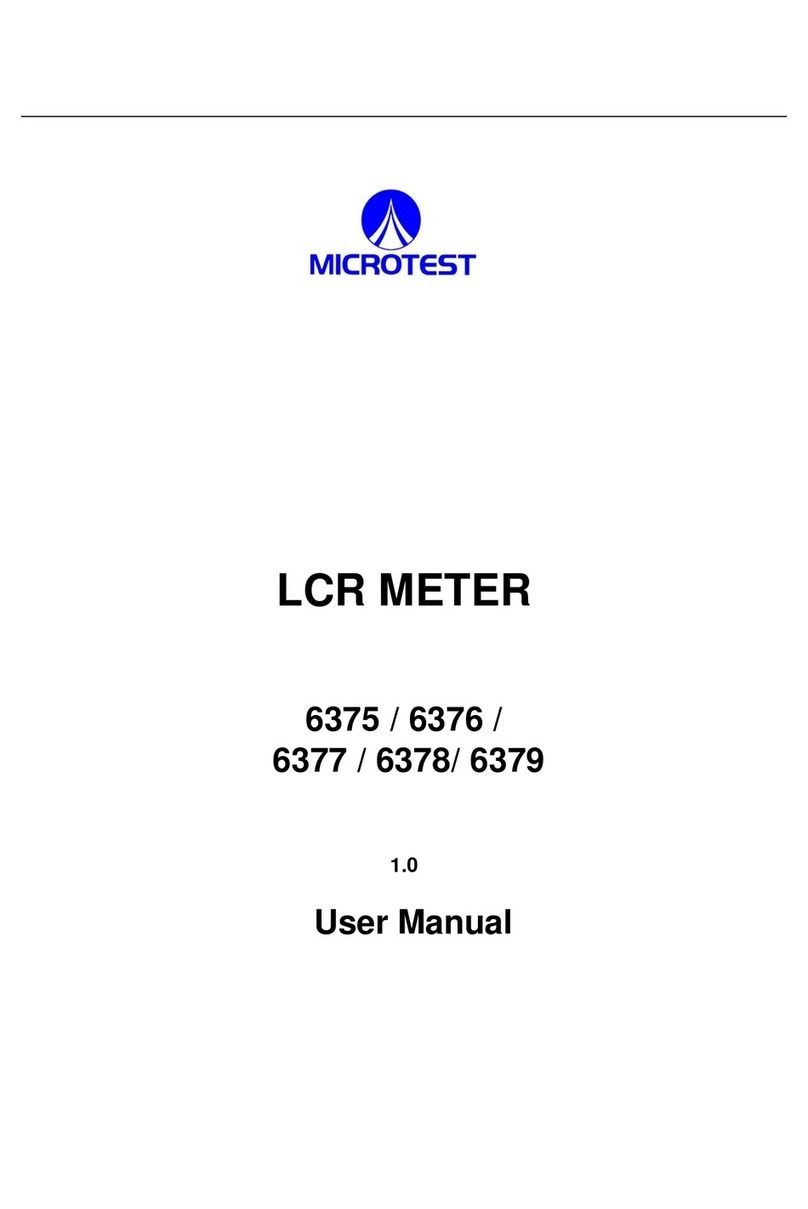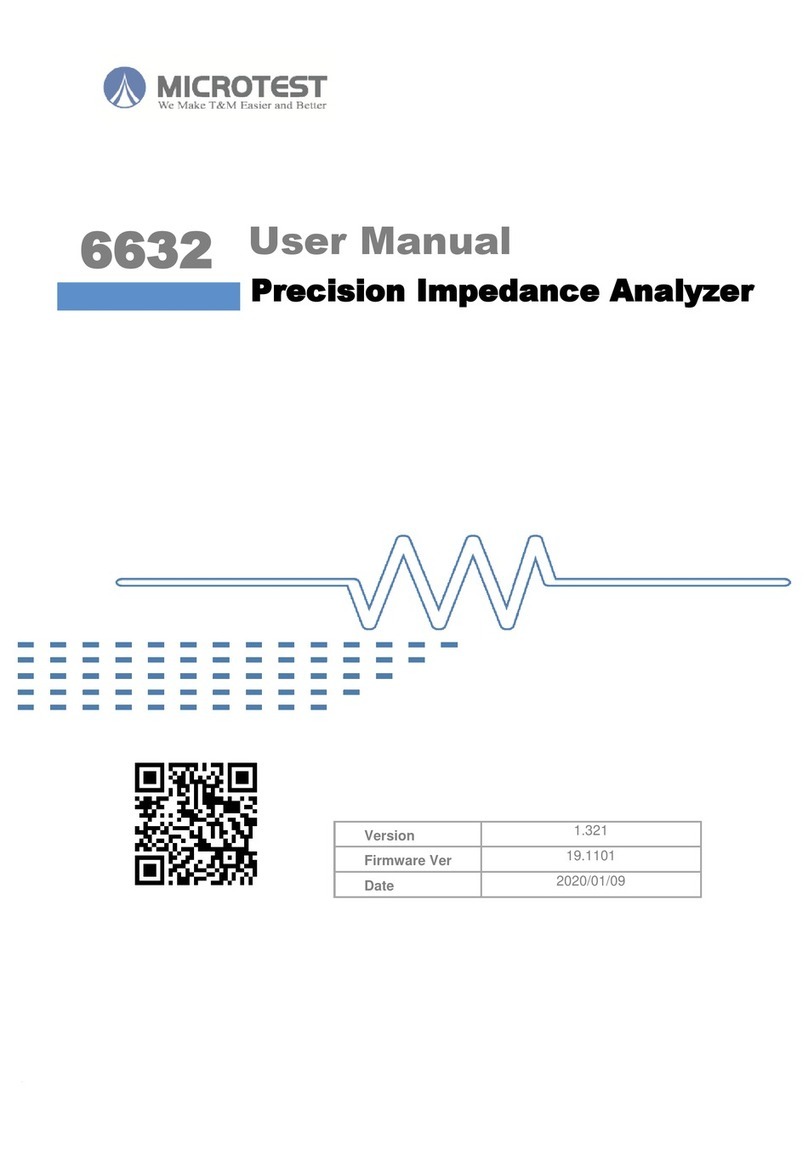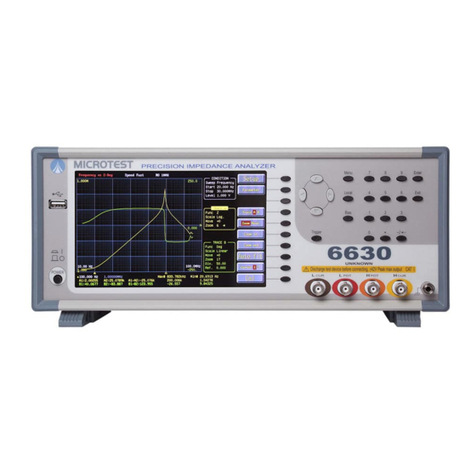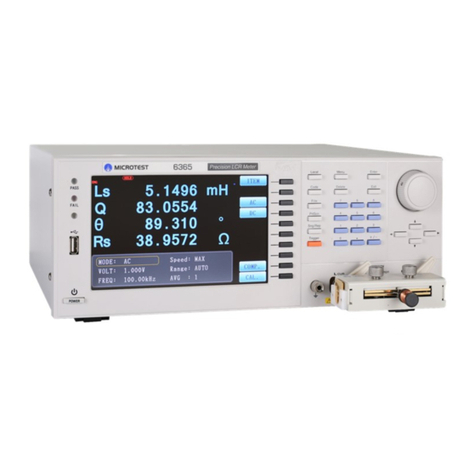2015/7/07 Version
3
Chapter 1 Cautions ....................................................................................5
Section 1.1 Safety Labels...............................................................................5
Section 1.2 Never modify the device or perform internal calibrations
yourself. ........................................................................................5
Section 1.3 Static Electricity............................................................................5
Section 1.4 Earthing.........................................................................................6
Section 1.5 Power Supply...............................................................................6
Section 1.6 Warming-Up.................................................................................6
Section 1.7 Device Malfunctions....................................................................6
Section 1.8 After Testing.................................................................................6
Section 1.9 Installation and Storage..............................................................7
Section 1.10 Emergency Measures.................................................................7
Chapter 2 Foreword ...................................................................................8
Section 2.1 Features........................................................................................8
Section 2.2 Measuring Functions ..................................................................9
Section 2.3 Function Flow-Chart....................................................................9
Chapter 3 Wiring.......................................................................................10
Section 3.1 Connecting to the Power Supply and Testing Items............10
Section 3.2 F71201-Exclusive Jig Internal Measuring Wiring
Schematic Diagram...................................................................11
Chapter 4 Operating Settings..................................................................12
Section 4.1 Measurement Mode..................................................................12
Section 4.2 Measurement range..................................................................13
Section 4.3 Averaging....................................................................................14
Section 4.4 Update Rate...............................................................................15
Section 4.5 Synchronization.........................................................................16
Section 4.6 Harmonic Operation Mode Selection.....................................21
Section 4.7 Start Line and Frequency Filter Function ..............................22
Section 4.8 Set Frequency CF Value..........................................................24
Section 4.9 Setting 4th Display Measurement Values..............................25
Section 4.10 Keyboard Lock...........................................................................26
Section 4.11 Store/Load Panel Settings Configuration ..............................27
Section 4.12 Set GPIB Address.....................................................................28
Section 4.13 Remote Control Mode ..............................................................29
Section 4.14 Set RS232 Baud rate and Final Character............................30
Section 4.15 The SCALE Function................................................................31
Section 4.16 Use Power Integrator................................................................33












